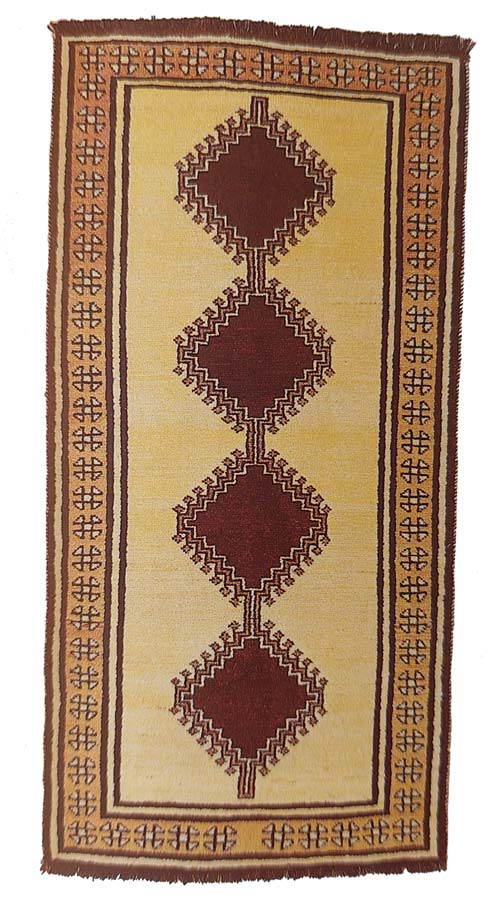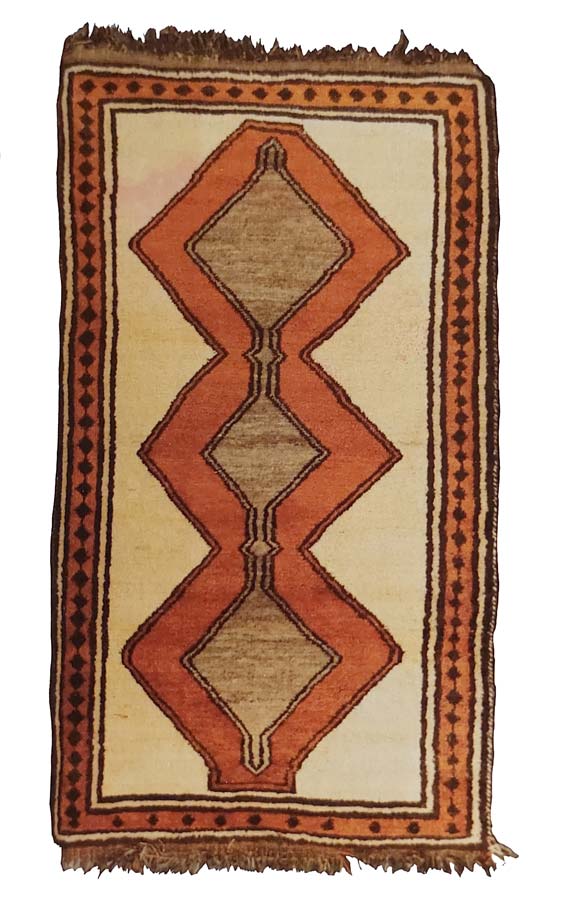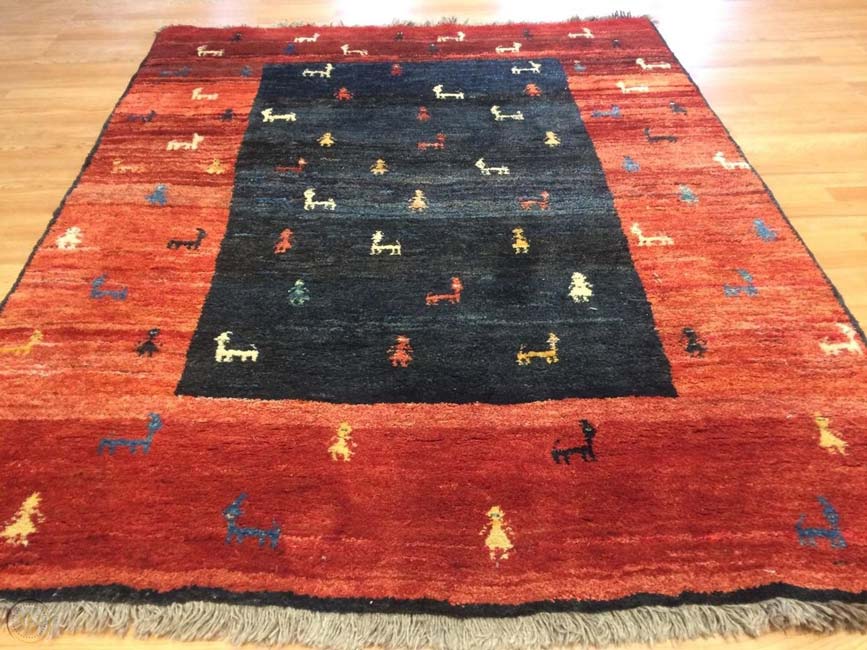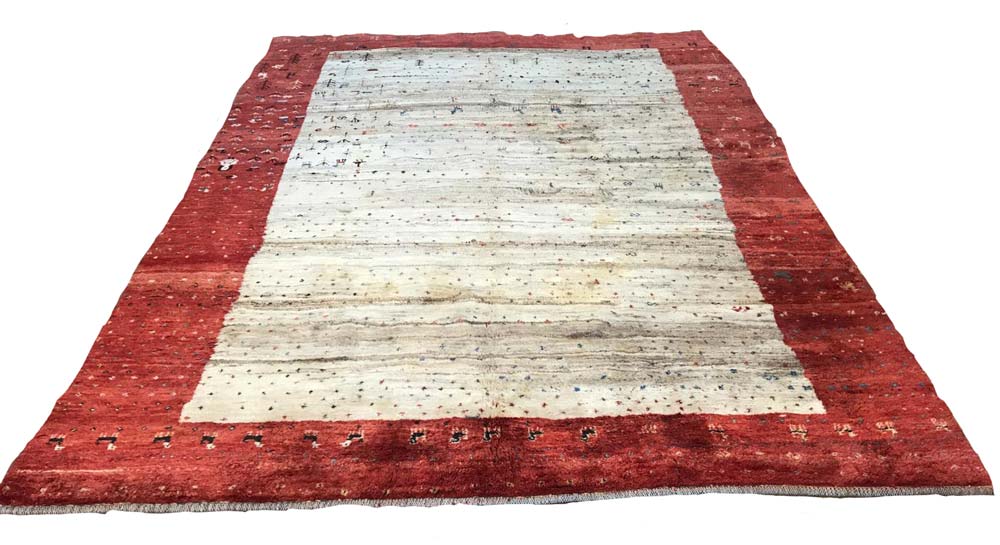How to determine the age or age of a carpet
Being able to determine, even approximately, the age of a carpet is both a fascinating and complex task.
Fascinating to know the exact time in which the carpet was manufactured, information that is also valuable since it is one of the factors that determines the value of a piece.
But also complex since except for the rare case in which the carpet has the date on which it was manufactured knotted, it is a difficult task in which there are never absolute certainties, at most we will always have an approximation of when that carpet was knotted.
Even so, there are some clues that can help us determine the date on which a rug was woven:
1.- The year of manufacture woven into the carpet.
This is the only case in which with one hundred percent clarity and certainty we can know the exact year in which a carpet was produced. Some carpets have the year in which they were woven knotted within the body of the carpet itself, and may even include the place of production. This date can be indicated according to the Gregorian calendar(See examples):
2.- The wear and tear suffered reflected in the thickness of the carpet
A newly manufactured rug has a certain thickness that is given by the characteristics of each production area. As the decades go by, due to the effect of use and friction, the carpet lowers its height, wears out, “peels” until it reaches a point where it no longer has hair and we can only see the knots, the next step to that phase is a hole in the carpet.
How to determine the age of a carpet according to the level of wear is not a complex task, but very complex, it can be very variable depending on where that carpet has been, imagine the difference in wear that a carpet suffers in 10 years, being in a private house where only one person lives, or being in the reception of a hotel.
Wear and tear will also depend on the quality, resistance and composition of the fabric of a carpet, but in general the greater the wear and tear, the older the carpet.
3.- The length of the fringes, and if they have any type of restoration.
The fringes, like the festoon, of a carpet, is one of the elements that most quickly suffers the passage of time and deteriorates first. As the fringe wears out, it gets shorter and shorter until we are finally forced to restore that fringe. Since the fringe is the continuation of the warp of a carpet, the vertical threads that cross the carpet vertically, if a rug has run out of fringes over time, one of the ways to restore that wear is to “eat” a few rows of knots, that is, to take out knots, to “release” a couple of centimeters of warp and turn this warp into fringe, In this case you can clearly see how at the end of the carpet part of the drawing has disappeared, it has a very short fringe and a finish made with totally new thread “see image”.
Obviously there are other ways to fix the fringe, such as replacing it and placing a new one, even so in this case we can see that it is a rug that is years old since it has fringes that have been replaced.
4.- Variation in the color of a rug
A newly manufactured carpet usually has bright, new, and bright colors, as the years go by we will submit different processes to the carpet:
The first is daily use, then another determining factor is the direct sun it receives, since direct sunlight “eats everything”.
Another factor that affects the wear of the color is the washing of a carpet, washing returns the carpet clean, but at the same time results in a violent process for the carpet since it wears it out, the more times it is washed and dried in the sun the more wear it will have on the color.
In summary, seeing the color of a rug and its shades we can clearly and with certainty distinguish if it is new or not and if it is not new, it will have to be combined with other “clues” to determine an approximate age of the rug.
5.- The “history” of the carpet
On some occasions if we receive a carpet directly from the owner, he knows and can tell us the “history” of the carpet:
“This carpet was bought by my grandmother just before the start of the First World War, in a consignment of carpets that had just arrived from Persia…”
This tells us that it was a carpet purchased in 1913/1914 and that it was, at the time of purchase, a new carpet. This is just an example, what I mean is that many times the owner can give us clear clues that lead us to determine, even approximately, the date of production of a carpet.
6.- Consider repairs
Another factor that can help us determine if a carpet is new or not or even its age is that of repairs, although this is the least determining factor since the passage of time does not necessarily imply that a carpet has had repairs and that the carpet is new does not imply that it is free of them either. But in general it is true that as the years go by a carpet undergoes restorations, although, I insist, it is a factor that can help us little to determine the date of manufacture of a carpet.
7.- The evolution of designs
Each region or production area has its own particular design, which is why as soon as we see a rug we know where it comes from. Now, the designs in some cases have been varying over the decades, very common designs with the passage of time have been disappearing, just as others did not exist before now they can be more frequent, in this case you have to look at carpet by carpet and case by case, you cannot generalize, but as an example let’s look at the type of carpet called Gabbeh, let’s see what the old and original Gabbeh were like, which today are practically no longer produced:
Original Gabbeh Image:


And what are contemporary Gabbehs like, from the 80s onwards:


Conclusion:
As you can see, the dating of a carpet is not an exact science in which absolute certainties can be offered, but rather it is based on a determining factor that is experience:
The years that a person has been in the world of carpets with what this implies: That thousands of carpets have passed through their hands and they have seen, bought, sold, manipulated, fixed, restored, valued and appraised an endless number of carpets. Interaction with suppliers, weavers, manufacturers, restorers, etc… The reading of books, articles and magazines on the subject, and finally, undoubtedly the most pleasurable, the hours of conversation and discussion with other lovers of this world about the origin, provenance or age of a specific piece drinking Persian tea.












